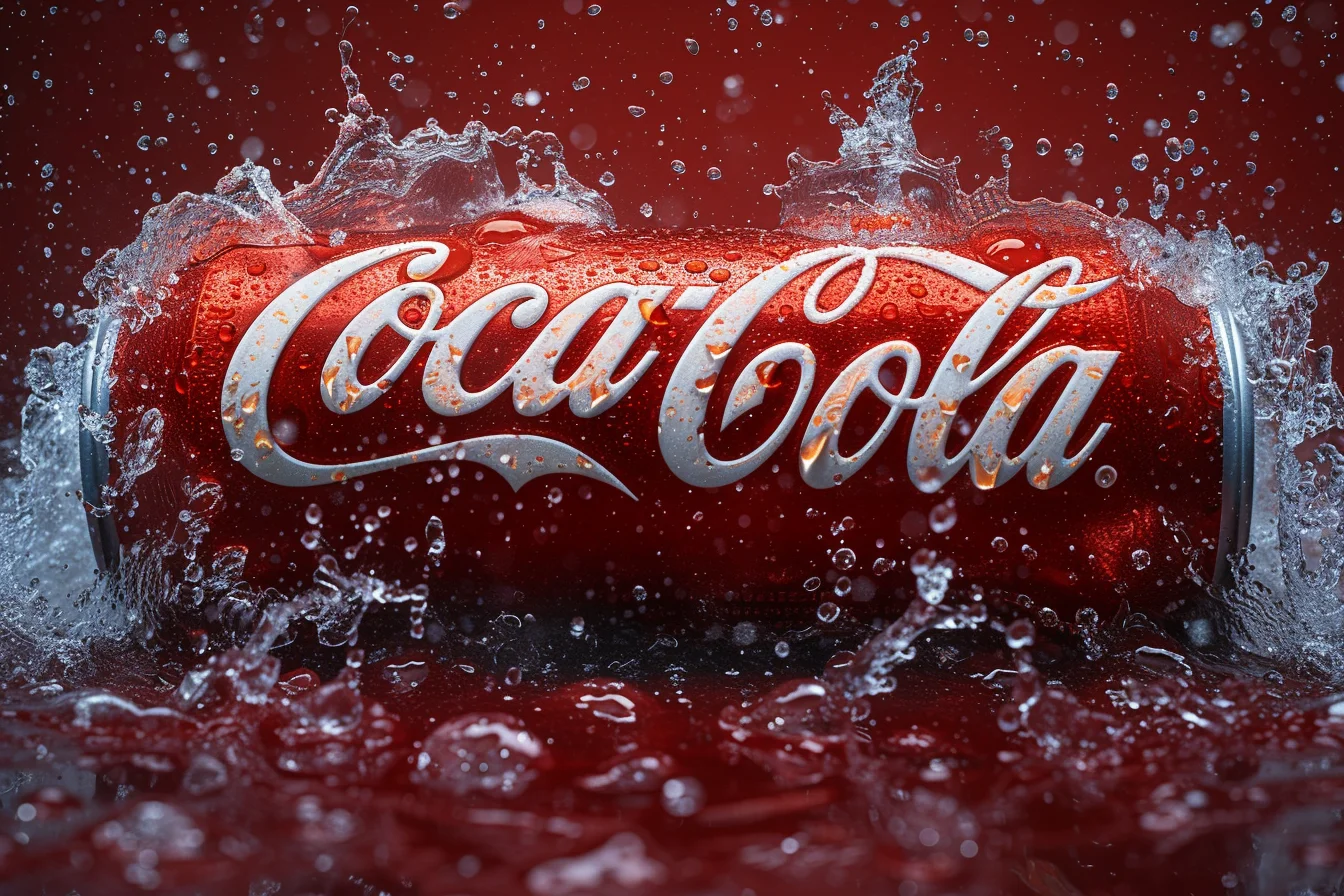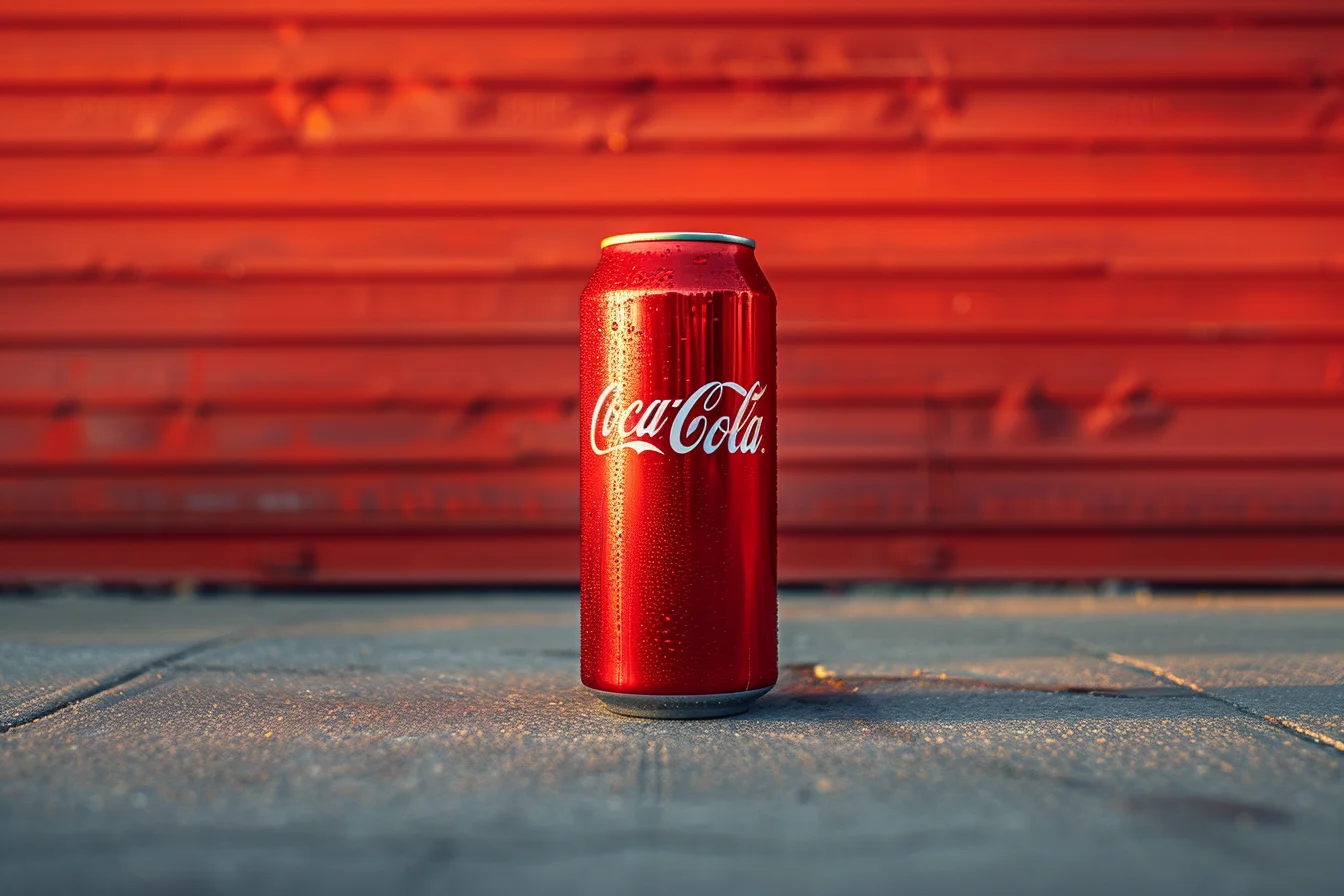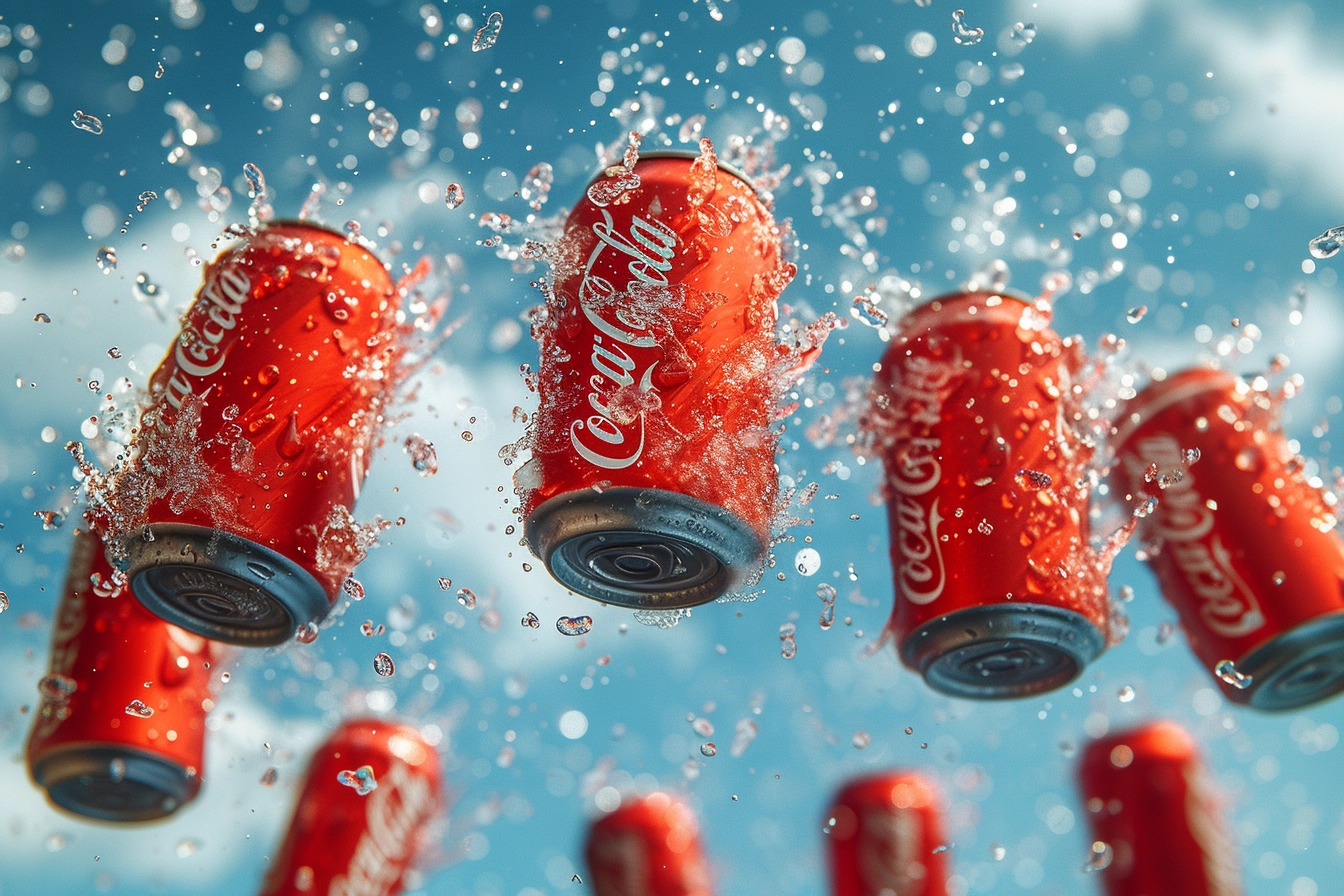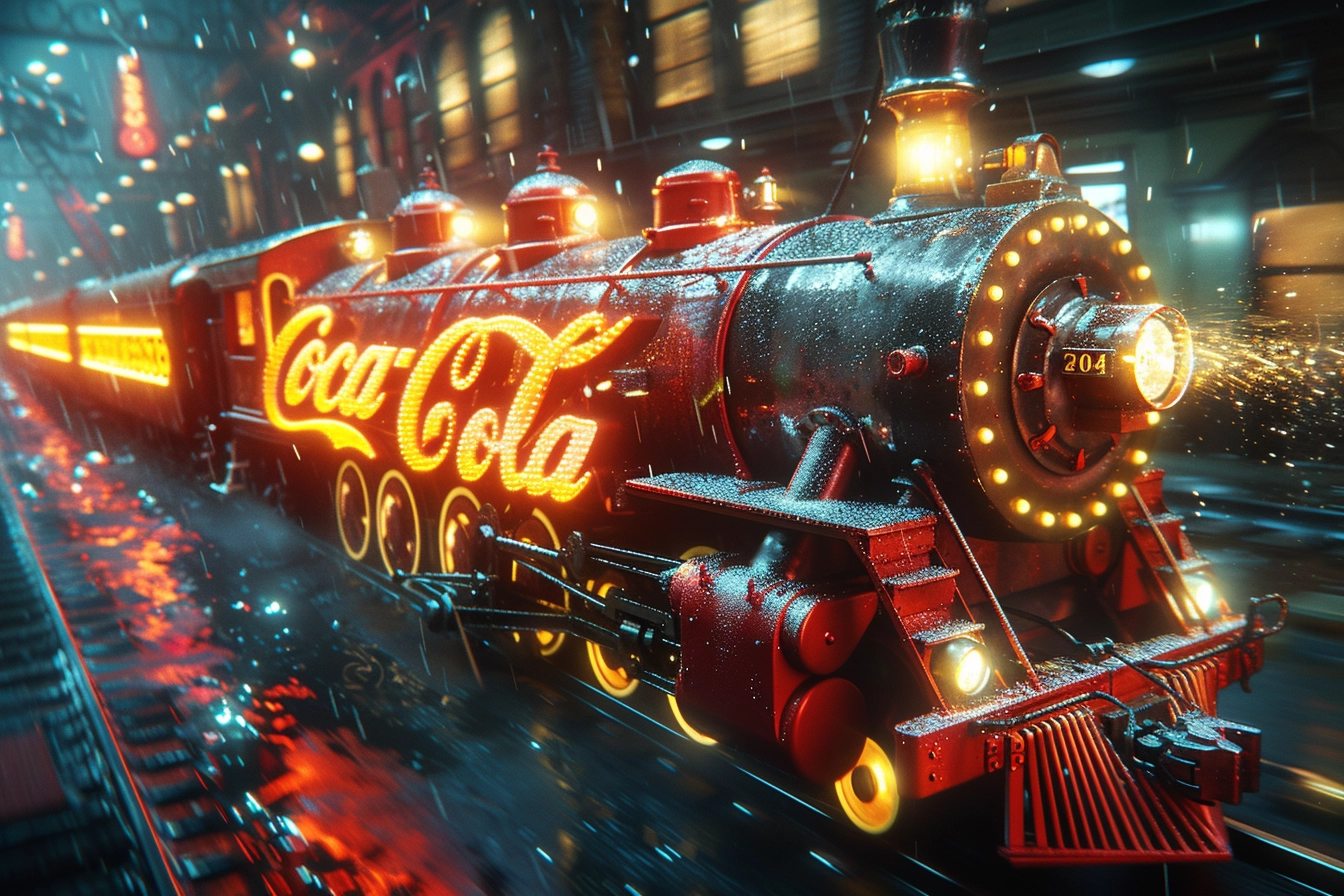Decline of Coca-Cola
The worldwide beverage market has long been dominated by Coca-Cola. It became a symbol of joy and refreshment across the world because of its recognizable formulations and eye-catching red cans. But around the turn of the twenty-first century, Coca-Cola’s strong foundation began to erode. There were multiple reasons behind Coca-Cola’s decline.

1. Shift in Consumer Preferences: As people’s awareness of their health increased, there was a noticeable move away from sugary carbonated drinks like Coca-Cola and towards healthier options including flavored teas, bottled water, and natural juices. Coca-Cola saw a drop in sales and market share because of its inability to modify its product lineup to accommodate these shifting consumer tastes.
2. Brand Perception Issues: As time went on, people started to perceive Coca-Cola as being archaic and disconnected from contemporary consumers. Coca-Cola depended on its heritage as rivals unveiled creative marketing efforts and new products, failing to pique the interest of younger consumers and tech-savvy consumers.
Learn how to make a brand strategy for the Gen Z market:
3. Errors in Product Development: Coca-Cola found it difficult to develop and launch new goods that connected with customers, even though it dominated the market. Its attempts to expand its offering by adding new tastes and varieties frequently failed to create the buzz and sales necessary to spur expansion.
4. Leadership Difficulties: Coca-Cola has internal leadership and corporate governance issues that made it more difficult for the company to adapt to the shifting needs of the market. The brand’s downfall and susceptibility to competitors were attributed to the absence of a coherent vision and strategic direction.

Coca-Cola experienced a decline in its revenue and customer perception due to this situation. As a result, its prospects for the future were diminished. The executives at Coca-Cola recognized the
need for action to regain the company’s strength and maintain its position as one of the renowned beverage brands globally. Consequently, Coca-Cola began conducting experiments and implementing changes to secure long-term profitability and popularity.
The Audacious New Perspective
Given the gravity of the situation, Coca-Cola’s executives decided to conduct a thorough analysis of the company’s advantages, disadvantages, and prospects. They realized that a drastic makeover was required to spark customer interest and spur growth, as small adjustments would not be enough to turn around the company’s prospects.
Increasing its efforts to prioritize innovation and diversification was the key component of Coca-Cola’s ambitious new vision. Coca-Cola tried to diversify its offerings to include a wider range of beverages that responded to changing consumer interests and lifestyles rather than only depending on its main cola products. This included presenting low-calorie sodas, natural fruit juices, and bottled water as healthy options. It also required investigating new product categories like ready-to-drink teas and energy beverages.

Coca-Cola realized the value of improving its brand perception and reestablishing a closer connection with customers in addition to offering innovative products. They connected the brand with principles that appealed to contemporary customers by launching several marketing initiatives that embraced diversity, inclusivity, and social responsibility. Coca-Cola tried to build emotional bonds and connect with customers on a more personal level through everything from endearing television advertisements to engaging social media initiatives.
Learn how to stand out as a brand:
Coca-Cola then embraced transformation in a digital way as a part of its strategy by investing heavily in data analytics, e-commerce, and targeted marketing initiatives. By leveraging technology to gain an understanding of consumer preferences and behavior Coca Cola successfully enhanced the pertinence and appeal of its marketing content and products to cater to the tastes and interests of its target audience. Here are a few relevant examples that show how Coca-Cola is dedicated to improving the way people see its brand and connecting with them more deeply through marketing efforts that highlight diversity, inclusivity, and social responsibility.
- Share a Coke: Throughout this campaign, the Coca-Cola brand was replaced on cans and bottles with well-known names and endearing phrases. Coca-Cola encouraged people to share a Coke with friends, family, and loved ones by personalizing their products, promoting inclusion and a sense of community.
- It’s Beautiful: During the 2014 Super Bowl, a television ad included scenes of various people from all backgrounds and cultures sipping Coca-Cola together. Throughout the commercial, many languages were used to sing “America the Beautiful,” honoring the nation’s cultural variety and advancing inclusivity.
- The Wonder of Us: This 2018 ad highlighted the diversity and individuality of people all around the world. The advertisement emphasized Coca-Cola’s belief in the power of inclusivity and acceptance by showcasing individuals of all ages, ethnicities, and lifestyles gathering to enjoy the beverage.
- Small World Machines: Coca-Cola set up vending machines in Pakistan and India as part of a social experiment that let residents of those two nations communicate with one another via live video streams. The campaign aims to break down barriers via a simple act of kindness and emphasize the shared humanity of the two countries to promote peace and harmony.

Coca-Cola’s ambitious new vision included a focus on responsibility and sustainability. Recognizing the increasing significance of stewardship and ethical business practices Coca-Cola Cola is committed to reducing its carbon footprint minimizing waste and supporting underprivileged communities. By prioritizing sustainability Coca Cola did not differentiate itself from competitors. Also improved its brand image and resonated with socially conscious consumers.
Navigate the significance of eco-friending designs:
Coca-Cola was also aware of how important it was to foster an inventive and flexible culture within the organization. They encouraged staff members to think creatively, take calculated chances, and challenge the status quo, which allowed them to create positive change and push the boundaries of what was possible. Coca-Cola was able to take advantage of new chances and surpass its competitors by having an entrepreneurial spirit that allowed it to adjust to the constantly shifting market conditions and remain adaptable.
Equipped with this audacious new outlook and a revitalized sense of mission, Coca-Cola went out to carry out its plan with tenacity and concentration, sure that it had what it required to bring the brand back to life and reclaim its position as the industry leader.

Revival of Coca-Cola
Every aspect of Coca-Cola was impacted as the company started to execute its audacious new plan. Every part of the brand, from marketing initiatives to product development, was driven by a spirit of creativity, purpose, and resolve to take back the top spot in the beverage business globally.
A primary force for Coca-Cola’s comeback was its dedication to product innovation and diversification. Coca-Cola was able to appeal to a larger range of consumers and satisfy the growing demand for healthier options and functional drinks by diversifying its offerings. Coca-Cola showed that it could stay ahead of the curve and predict changing consumer trends by releasing new flavors of its iconic soda, new package designs, and forays into uncharted markets like plant-based beverages and sparkling water.
Coca-Cola ramped up its marketing efforts in addition to its attempts to innovate its products, using a combination of traditional and digital media to meaningfully interact with consumers. Coca-Cola captured the attention of viewers worldwide with messages that honored diversity, inclusivity, and the joy of spending time with loved ones through animated social media campaigns and endearing television advertisements. Coca-Cola was able to ignite brand passion and generate renewed interest and loyalty within its customer base by creating emotional ties and connecting with consumers on a deeper level.
Discover the key factors that evoke consumer emotions:

What changed things the most, arguably, was Coca-Cola’s dedication to developing an innovative and flexible culture within the company. Employees were encouraged to question established conventions and processes and to disrupt the status quo by exercising their creative thinking freely. This inquiry-and exploration-focused culture promoted a mindset of ongoing development and inspired staff members to look for fresh chances for advancement and creativity. Coca-Cola developed an environment where employees felt encouraged to take calculated risks and experiment with new ideas, knowing that their efforts would be supported and rewarded by leadership, by building a culture where failure was seen as a learning opportunity rather than a setback.
Coca-Cola was able to take advantage of new opportunities and maintain an advantage over its competitors by swiftly adapting to changing market conditions thanks to its innovative culture. Coca-Cola was able to react quickly to shifting customer tastes, new trends, and challenges from competitors by adopting a flexible and agile decision-making process. Coca-Cola proved its capacity for innovation and evolution in real-time, securing its ongoing relevance and success in the market, whether it was by introducing new products, changing up its marketing tactics, or investigating novel business models.
Moreover, Coca-Cola’s inventive culture encompassed alliances and cooperative efforts with outside parties in addition to internal activities. Coca-Cola was able to promote co-innovation and co-creation by leveraging the knowledge and perspectives of suppliers, customers, and partners by encouraging an open and cooperative approach to invention. Coca-Cola was able to access new technology, enter new markets, and investigate development prospects through joint ventures and strategic alliances that would have been challenging to pursue on its own.
Due to these initiatives, Coca-Cola saw a spectacular recovery in sales and profitability, regaining its standing as the leading brand in the beverage sector globally. Coca-Cola has come back stronger and more resilient than ever from the verge of irrelevance, demonstrating that even the most recognizable brands can prosper in the face of uncertainty if they have a clear vision, a strong sense of purpose, and a willingness to adapt.

Learnings and Prospects for the Future
In today’s quickly changing economy, Coca-Cola’s journey from fall to resurrection provides insightful lessons and vital insights for firms facing similar issues. Throughout its transition, Coca-Cola learned a few important lessons that will guide its future and efforts:
1. Accept Innovation and Adaptability: Long-term success depends on your capacity to innovate and adjust to shifting market conditions. Coca-Cola was able to adapt to changing consumer demands and remain relevant by expanding its range of products, embracing new technologies, and trying out creative marketing techniques. In today’s fast-paced business world, companies can set themselves up for development and success by persistently questioning the status quo and welcoming change.
Explore the brand strategy that resonates with customers:
2. Highlight Consumer Engagement and Brand Building: Creating a deep emotional bond with customers is crucial to fostering their advocacy and brand loyalty. Coca-Cola’s emphasis on involving customers via meaningful storytelling, tailored experiences, and community-building projects helped rekindle brand enthusiasm and promoted a feeling of fidelity and community among its clientele. Businesses can improve their customer connections and set themselves apart from the competition by putting a higher priority on consumer interaction and brand development.
3. Leverage Digital Transformation: In the current digital era, innovation and business growth are largely dependent on the effective use of technology and data analytics. Through its embrace of digital transformation, Coca-Cola has been able to provide customers with omnichannel experiences that are seamless, personalized experiences, and targeted marketing efforts. Businesses may increase engagement, loyalty, and sales by utilizing technology to better understand consumer preferences and behavior.
Learn how to increase sales as a brand:
4. Encourage an Innovative and Aggressive Culture: Encouraging an innovative, agile, and entrepreneurial culture is essential to boosting the resilience and success of an organization. Coca-Cola’s dedication to developing an innovative culture encouraged staff members to think outside the box, take calculated chances, and question the status quo. By enabling workers to try new things, work together, and make positive changes, companies may encourage innovation and a culture of continuous development throughout the entire organization.

Anticipating the future, Coca-Cola’s comeback sets the company up for sustained expansion and prosperity. In the ever-changing beverage business, Coca-Cola is well-positioned to overcome upcoming difficulties and seize new opportunities by adhering to its basic values and embracing innovation, adaptation, and consumer involvement.
Finally, the story of Coca-Cola’s rise from a state of decline to a state of prosperity serves as a striking reminder of the transformational power of audacious strategic initiatives and an openness to change. In today’s dynamic business environment, organizations can position themselves for growth, innovation, and success by taking a cue from Coca-Cola’s experiences and implementing these lessons into their operations. The lessons from Coca-Cola’s journey can be applied by organizations to drive growth, innovation, and success in the modern period, as they face the challenges of an increasingly complicated and competitive industry.



